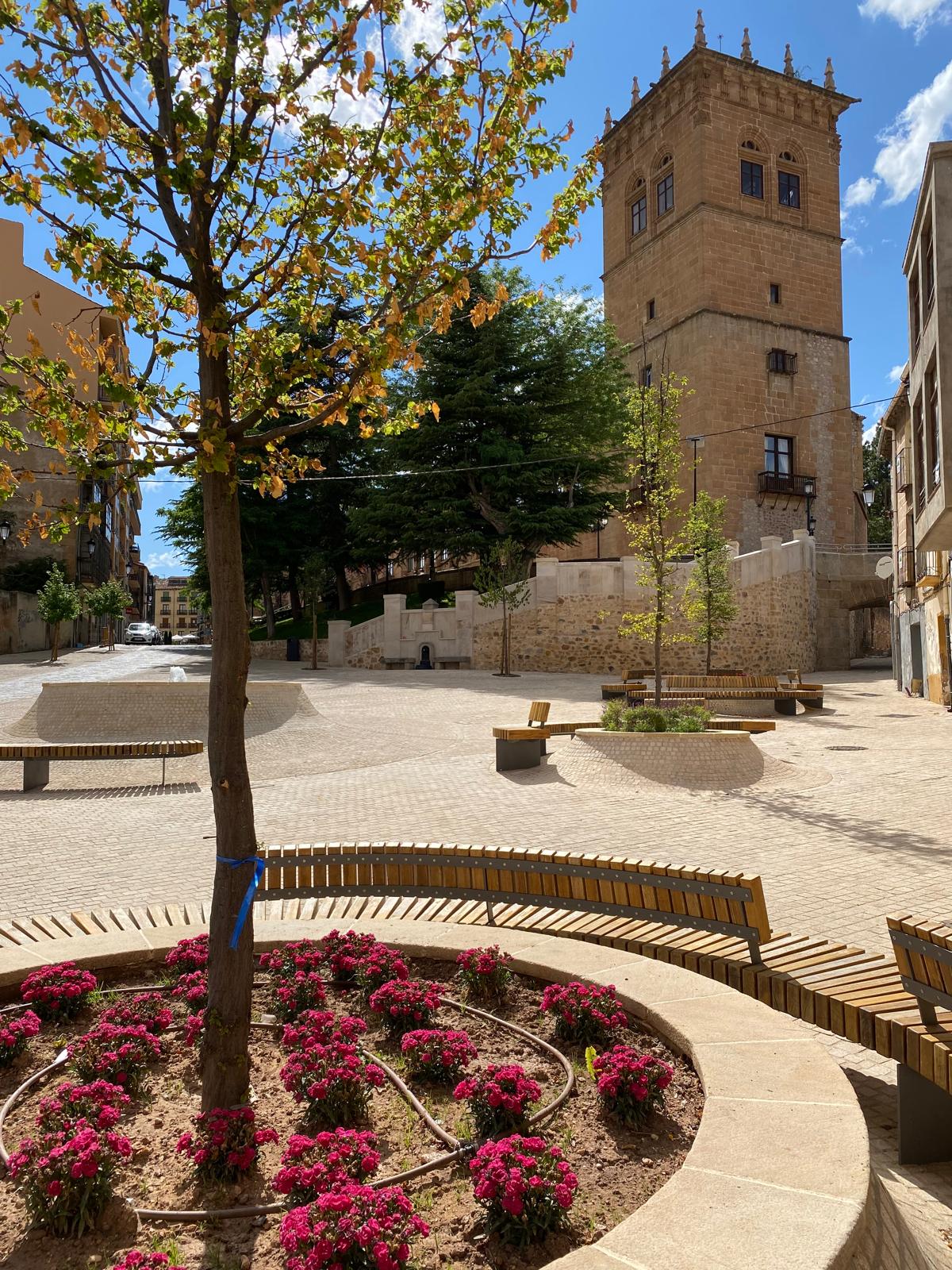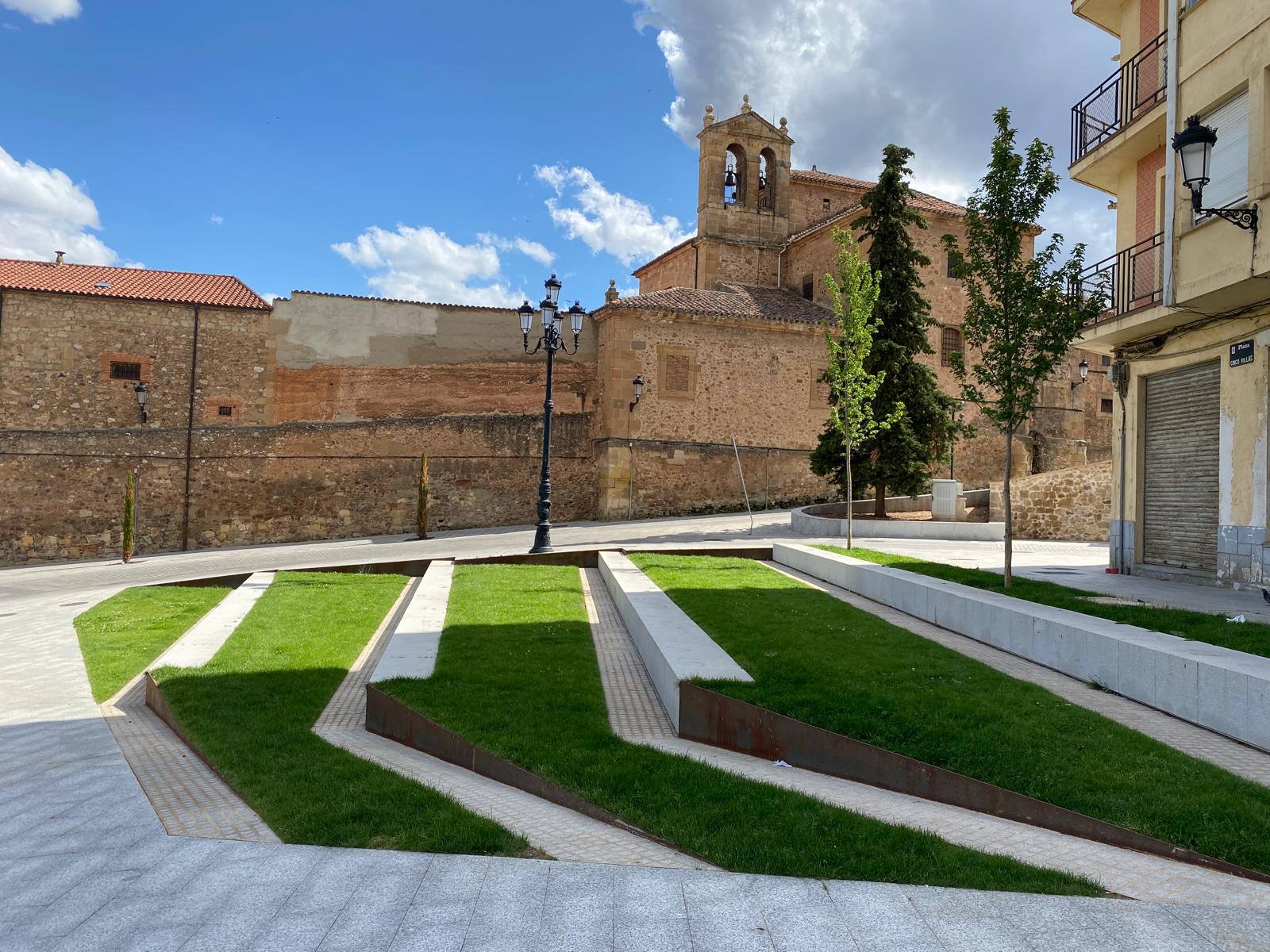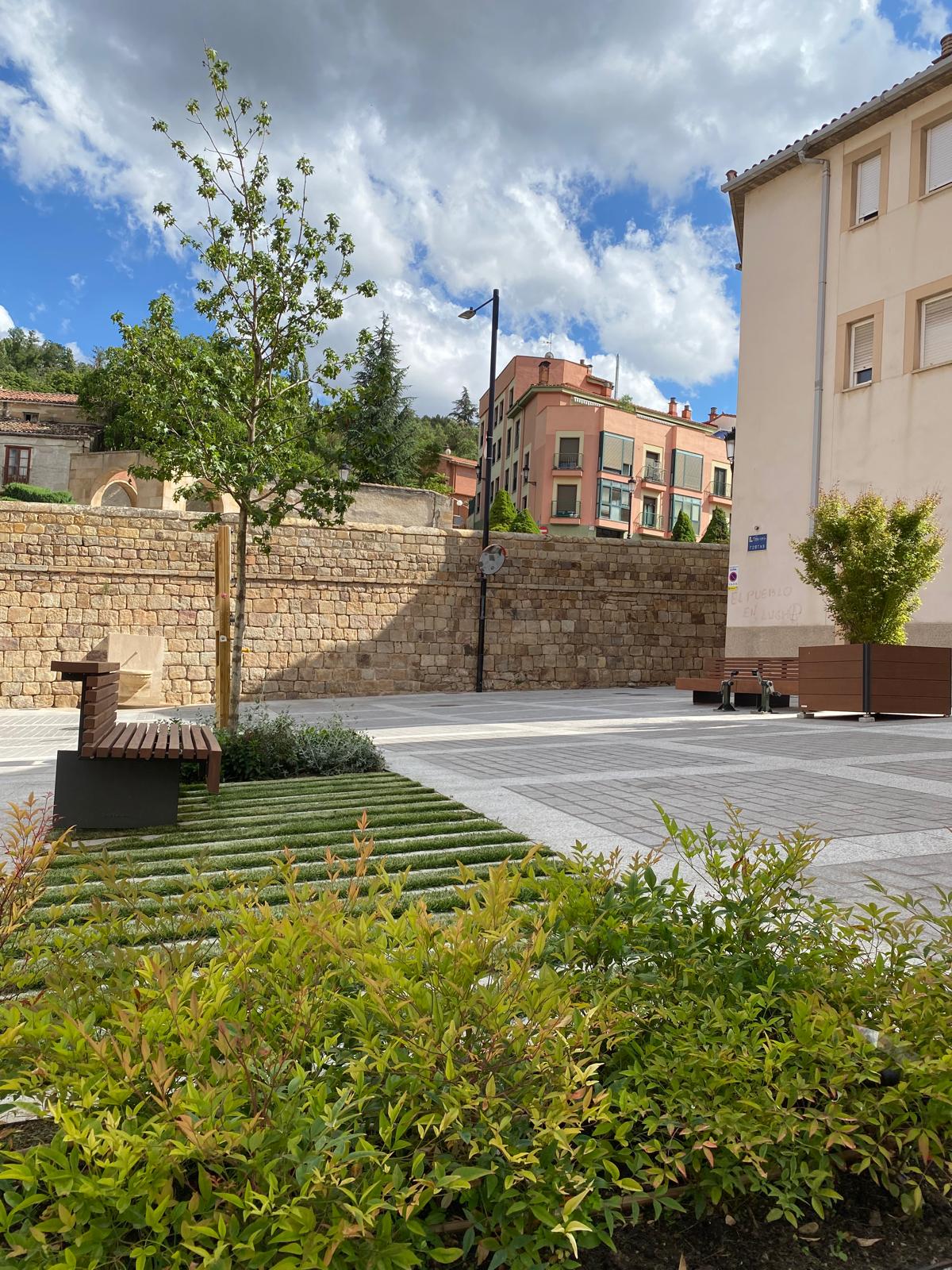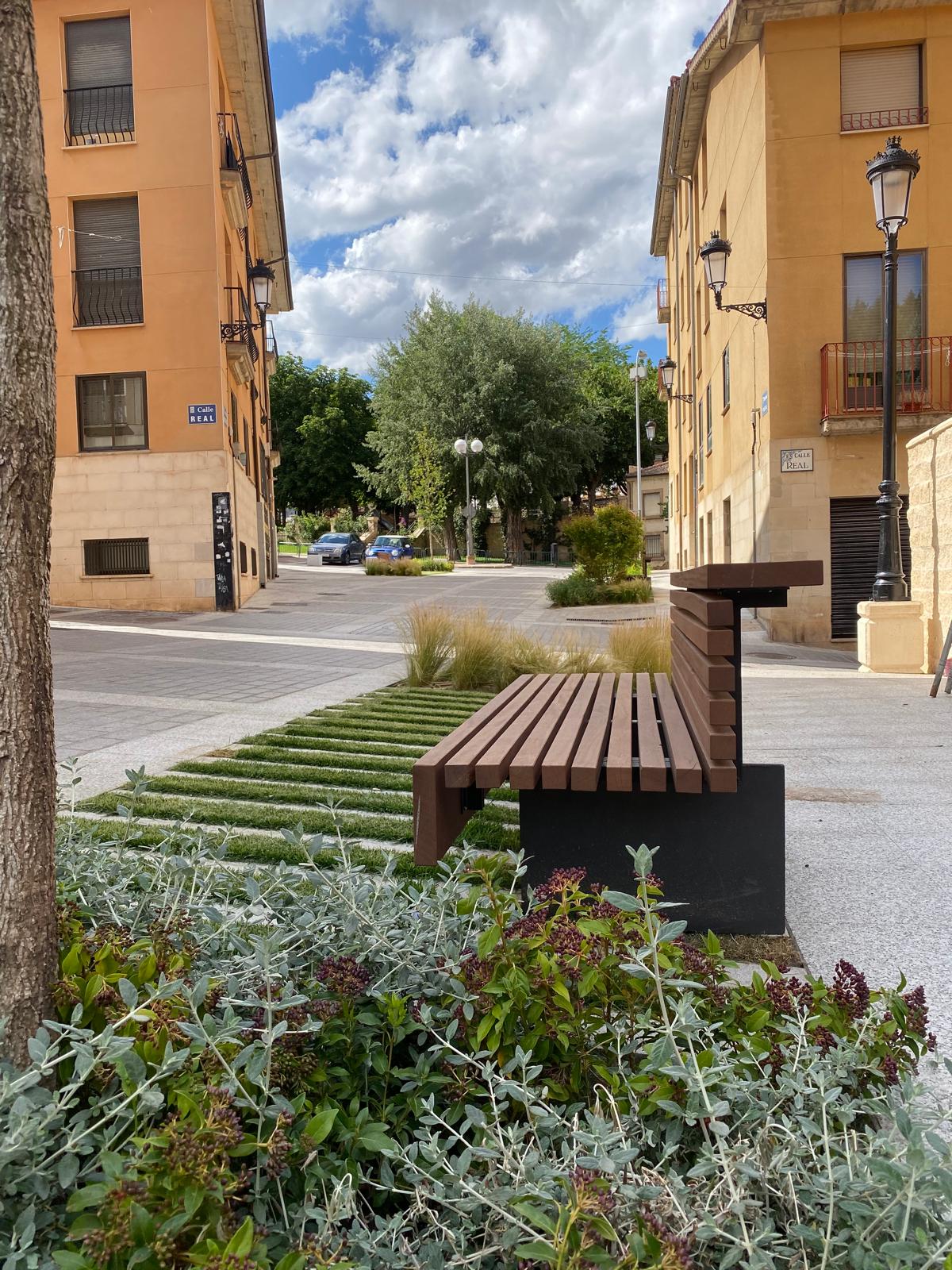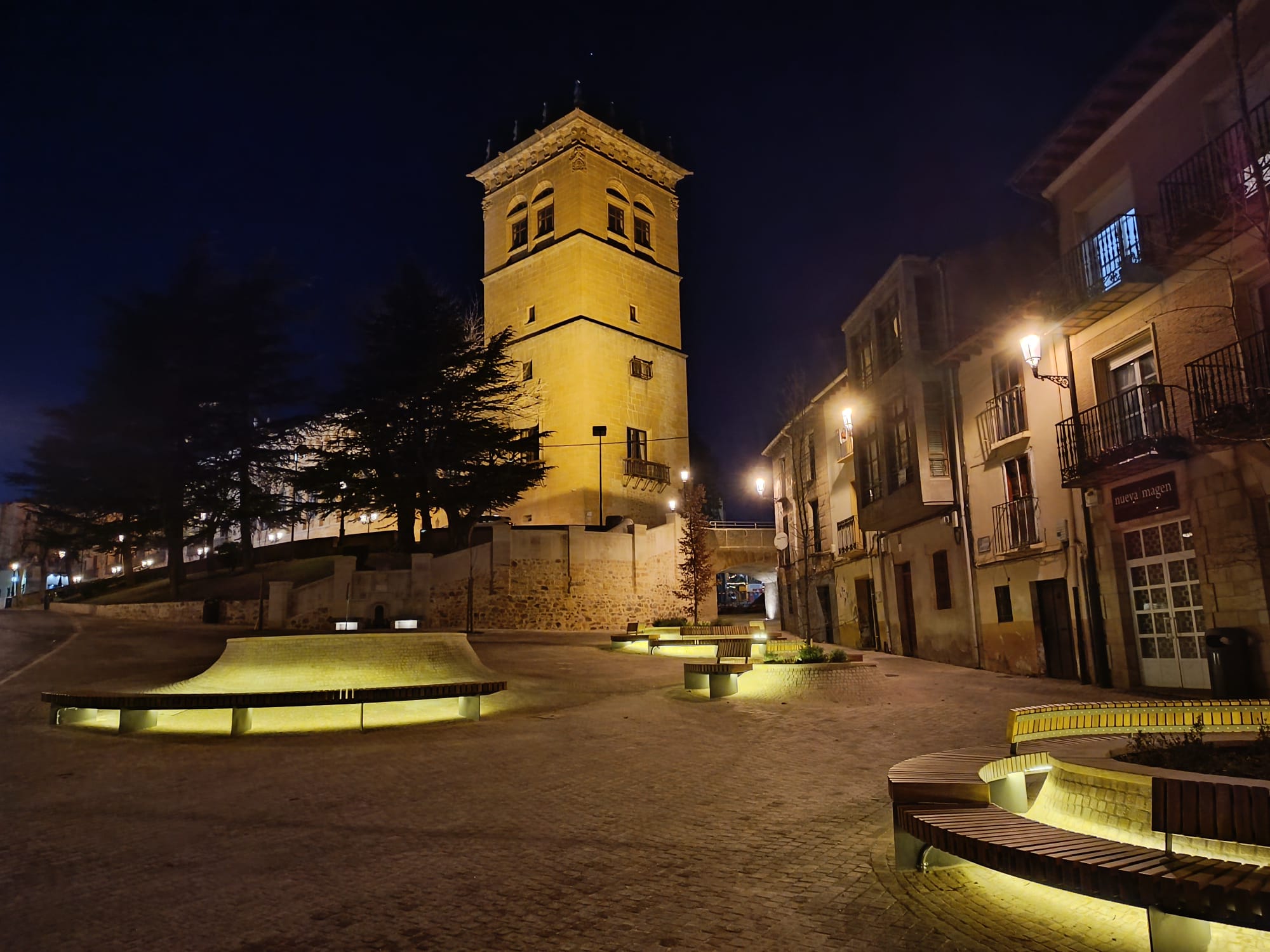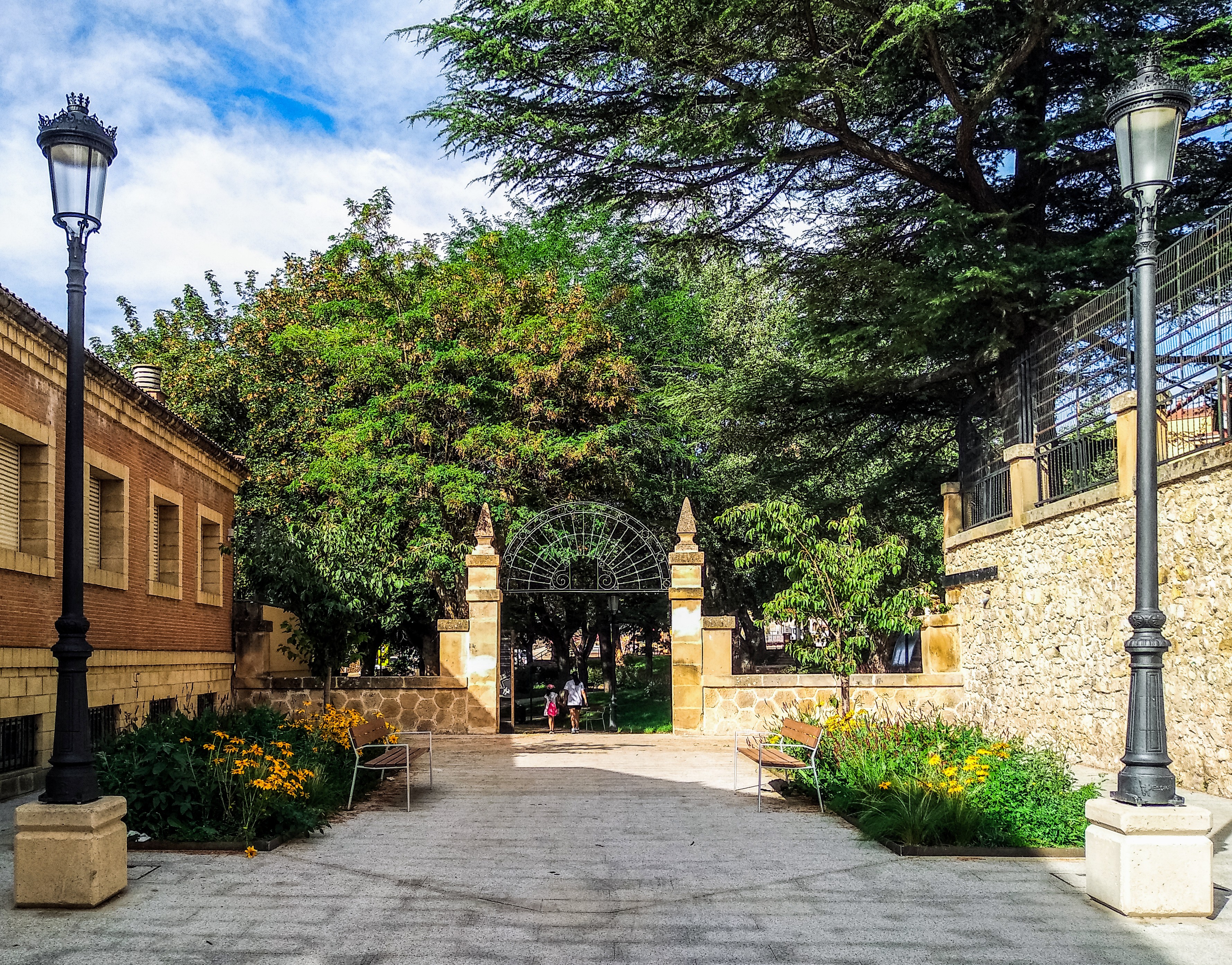Reconnecting with nature
Soria Abierta
{Empty}
"SORIA ABIERTA" project brings together three of the action lines of the EDUSI program "SORIA INTRAMUROS." The project's goals focus on the need to connect different parts of the city, link its points of interest, and enhance the urban environment so that different generations can enjoy welcoming spaces that encourage interaction and diverse shared uses.
Spain
Local
Soria
Mainly urban
It refers to a physical transformation of the built environment (hard investment)
Yes
2024-08-01
Yes
ERDF : European Regional Development Fund
No
No
As an individual partnership with other persons/organisation(s)
The "SORIA ABIERTA" project brings together three of the action lines of the EDUSI program "SORIA INTRAMUROS." The project's goals focus on the need to connect different parts of the city, link its points of interest, and enhance the urban environment so that different generations can enjoy welcoming spaces that encourage interaction and diverse shared uses.
The main needs it addresses revolve around promoting sustainable urban mobility, ensuring that pedestrian movement and other environmentally and acoustically non-polluting modes of transportation regain prominence over the widespread use of private vehicles. This approach aims to rethink and redefine the city's accessibility as an extension of the human scale.
The project seeks to expand the city's green infrastructure through nature-based solutions, fostering biodiversity while also improving thermal comfort in open spaces and enhancing rainwater drainage.
The interventions aim to improve underutilized or poorly managed public spaces and create shared-use meeting areas, with the goal of regenerating and revitalizing these spaces so that citizens have access to public areas that promote recreational, sports, or cultural activities, among others. To achieve this, various solutions have been implemented, such as installing high-quality urban furniture and street infrastructure.
The main needs it addresses revolve around promoting sustainable urban mobility, ensuring that pedestrian movement and other environmentally and acoustically non-polluting modes of transportation regain prominence over the widespread use of private vehicles. This approach aims to rethink and redefine the city's accessibility as an extension of the human scale.
The project seeks to expand the city's green infrastructure through nature-based solutions, fostering biodiversity while also improving thermal comfort in open spaces and enhancing rainwater drainage.
The interventions aim to improve underutilized or poorly managed public spaces and create shared-use meeting areas, with the goal of regenerating and revitalizing these spaces so that citizens have access to public areas that promote recreational, sports, or cultural activities, among others. To achieve this, various solutions have been implemented, such as installing high-quality urban furniture and street infrastructure.
Sustainable mobility
Public space
Renaturalization
Accessibility
Cultural heritage
The renaturalization of public and private spaces is one of the priorities of the Urban Agenda and the European funding associated with the cities' work axis. In addition to various studies indicating that increasing the presence of nature in the city is not only beneficial for public health and well-being, but also a powerful tool to combat the climate crisis.
For this reason, all proposals for transforming public spaces place people and nature at the core of every action, restoring the social value of architecture as a tool for collective transformation and the improvement of our environments.
The concept of the city is closely linked to the idea of public space as a meeting place for most social functions, and trees are the structural element par excellence of urban open spaces. Trees can act as an organizing element of the urban fabric, as a canopy for streets, and as a way to give buildings a more human scale. Tree-covered spaces provide identity, structure, and meaning to the urban landscape. They create places that allow for diverse uses, encourage social interaction, and promote longer stays—in other words, they make the city more human.
For all these reasons, the interventions within the program emphasize the incorporation of new green areas and tree planting, following a protocol that considers environmental aspects at all scales, as well as form, function, and future management.
For this reason, all proposals for transforming public spaces place people and nature at the core of every action, restoring the social value of architecture as a tool for collective transformation and the improvement of our environments.
The concept of the city is closely linked to the idea of public space as a meeting place for most social functions, and trees are the structural element par excellence of urban open spaces. Trees can act as an organizing element of the urban fabric, as a canopy for streets, and as a way to give buildings a more human scale. Tree-covered spaces provide identity, structure, and meaning to the urban landscape. They create places that allow for diverse uses, encourage social interaction, and promote longer stays—in other words, they make the city more human.
For all these reasons, the interventions within the program emphasize the incorporation of new green areas and tree planting, following a protocol that considers environmental aspects at all scales, as well as form, function, and future management.
Public space has a clear impact and contribution to the social and material quality of life in the city. Elderly people, people with disabilities, and children are population groups that make intensive use of public space; all of them may have special needs, whether due to different abilities, small stature, or mobility difficulties.
The proposal developed for the rehabilitation of the spaces included in the "SORIA ABIERTA" project seeks to define common values in all interventions within the historic center of Soria, aiming to achieve the 2030 Agenda objectives in terms of sustainability, efficiency, well-being, inclusion, and innovation.
The hierarchization of the urban road network in Soria, based on its levels of functionality, allows for the regulation and classification of urban interventions (sidewalks, pavements, vegetation, lighting, street furniture, etc.), with the goal of creating an efficient network of streets that meets both mobility and livability needs within the city.
The proposal developed for the rehabilitation of the spaces included in the "SORIA ABIERTA" project seeks to define common values in all interventions within the historic center of Soria, aiming to achieve the 2030 Agenda objectives in terms of sustainability, efficiency, well-being, inclusion, and innovation.
The hierarchization of the urban road network in Soria, based on its levels of functionality, allows for the regulation and classification of urban interventions (sidewalks, pavements, vegetation, lighting, street furniture, etc.), with the goal of creating an efficient network of streets that meets both mobility and livability needs within the city.
Universal accessibility is another key pillar of the project, promoting inclusive spaces free of architectural barriers that enable full use of public streets and serve as a tool for social integration.
The program's definition has resulted from a collaborative and participatory process, placing the residents of Soria at the heart of the initiative. The interventions have addressed the real, everyday needs of citizens, making it essential that their opinions and perspectives be part of an open and enriching design process.
The proposed initiatives have been developed through a simple and transparent participatory process involving the community, the Honorable City Council of Soria, and the drafting team.
The program's definition has resulted from a collaborative and participatory process, placing the residents of Soria at the heart of the initiative. The interventions have addressed the real, everyday needs of citizens, making it essential that their opinions and perspectives be part of an open and enriching design process.
The proposed initiatives have been developed through a simple and transparent participatory process involving the community, the Honorable City Council of Soria, and the drafting team.
The citizens who benefit from or are affected by the project, along with civil society, have actively participated in its design and development through various participatory mechanisms.
Meetings were organized with neighborhood associations, economic, cultural, and environmental groups, as well as representatives from different sectors, to gather proposals, demands, and identify needs.
Through the City Council's website, a survey was made available to collect public opinions and suggestions on the project's development. Additionally, a suggestion box was opened to receive individual contributions.
Sessions were held with business owners, neighborhood associations, and economic and social groups. These meetings helped define the project strategy with a focus on real community needs.
By involving civil society from the outset, the project gained stronger community support, reducing the likelihood of opposition or conflicts.
In summary, citizen participation has been a key pillar in the project's definition and implementation, ensuring that it is inclusive, efficient, and aligned with community expectations.
Meetings were organized with neighborhood associations, economic, cultural, and environmental groups, as well as representatives from different sectors, to gather proposals, demands, and identify needs.
Through the City Council's website, a survey was made available to collect public opinions and suggestions on the project's development. Additionally, a suggestion box was opened to receive individual contributions.
Sessions were held with business owners, neighborhood associations, and economic and social groups. These meetings helped define the project strategy with a focus on real community needs.
By involving civil society from the outset, the project gained stronger community support, reducing the likelihood of opposition or conflicts.
In summary, citizen participation has been a key pillar in the project's definition and implementation, ensuring that it is inclusive, efficient, and aligned with community expectations.
The project involved stakeholders at multiple levels to ensure an inclusive and sustainable urban transformation. At the local level, the Soria City Council led the planning and execution, while local associations, businesses, and residents participated through consultations and workshops. Their involvement helped tailor interventions to community needs, enhancing social inclusion, public space usability, and economic vitality.
At the regional and national levels, the Castilla y León government and Spanish ministries provided technical oversight, funding coordination, and regulatory support. Regional agencies ensured alignment with broader territorial development plans, while national entities, such as the Ministry of Transport and the Ministry of Environment, helped integrate the project into Spain’s sustainability and mobility goals. Their contributions ensured financial stability and policy coherence.
At the European level, the project benefited from co-financing by the European Regional Development Fund (FEDER) and guidance from EU urban development frameworks. This facilitated access to best practices and innovative sustainability strategies in line with the European Green Deal. Overall, the engagement of stakeholders at all levels improved policy alignment, strengthened financial sustainability, and fostered long-term community ownership, ensuring the project’s success.
At the regional and national levels, the Castilla y León government and Spanish ministries provided technical oversight, funding coordination, and regulatory support. Regional agencies ensured alignment with broader territorial development plans, while national entities, such as the Ministry of Transport and the Ministry of Environment, helped integrate the project into Spain’s sustainability and mobility goals. Their contributions ensured financial stability and policy coherence.
At the European level, the project benefited from co-financing by the European Regional Development Fund (FEDER) and guidance from EU urban development frameworks. This facilitated access to best practices and innovative sustainability strategies in line with the European Green Deal. Overall, the engagement of stakeholders at all levels improved policy alignment, strengthened financial sustainability, and fostered long-term community ownership, ensuring the project’s success.
SORIA ABIERTA integrated multiple disciplines and knowledge fields to ensure a comprehensive and sustainable urban transformation. Urban planning and architecture played a central role in redesigning public spaces, enhancing accessibility, and improving infrastructure. Environmental sciences and ecology guided the inclusion of green infrastructure and nature-based solutions to promote biodiversity and climate resilience. Mobility and transportation engineering contributed to sustainable mobility strategies.
Experts from these disciplines collaborated through interdisciplinary working groups, where urban planners, architects, environmental scientists, and engineers engaged in joint decision-making.
Experts from these disciplines collaborated through interdisciplinary working groups, where urban planners, architects, environmental scientists, and engineers engaged in joint decision-making.
The project stands out from other urban initiatives due to its integrated and innovative approach to sustainability, mobility, and social inclusion.
One of its main innovations is its people-centered mobility approach, prioritizing pedestrians. The project redefines urban accessibility by transforming streets into multifunctional and inclusive spaces that enhance walkability and connectivity. This approach not only optimizes mobility but also fosters a more livable and socially cohesive urban environment.
Additionally, SORIA ABIERTA incorporates participatory urbanism, ensuring that residents, businesses, and local stakeholders play an active role in shaping the interventions. By combining green infrastructure, sustainable mobility, and inclusive urban design, the project sets a new benchmark for small and medium-sized cities, demonstrating how urban regeneration can be both ecologically and socially transformative.
One of its main innovations is its people-centered mobility approach, prioritizing pedestrians. The project redefines urban accessibility by transforming streets into multifunctional and inclusive spaces that enhance walkability and connectivity. This approach not only optimizes mobility but also fosters a more livable and socially cohesive urban environment.
Additionally, SORIA ABIERTA incorporates participatory urbanism, ensuring that residents, businesses, and local stakeholders play an active role in shaping the interventions. By combining green infrastructure, sustainable mobility, and inclusive urban design, the project sets a new benchmark for small and medium-sized cities, demonstrating how urban regeneration can be both ecologically and socially transformative.
The urban intervention employs a participatory methodology, ensuring that urban regeneration efforts are aligned with community needs. Through participatory urbanism, residents, businesses, and social organizations contribute to the planning process through consultations, surveys, and public workshops. This inclusive approach strengthens social cohesion and ensures that interventions address real challenges.
A key aspect of the methodology is ecosystem-based design, which integrates nature-based solutions to enhance biodiversity, improve thermal comfort, and sustainably manage rainwater through drainage systems. Combined with a sustainable mobility strategy, the project prioritizes pedestrian-friendly environments, reducing dependence on private vehicles and transforming streets into accessible, multifunctional, and connected spaces.
A key aspect of the methodology is ecosystem-based design, which integrates nature-based solutions to enhance biodiversity, improve thermal comfort, and sustainably manage rainwater through drainage systems. Combined with a sustainable mobility strategy, the project prioritizes pedestrian-friendly environments, reducing dependence on private vehicles and transforming streets into accessible, multifunctional, and connected spaces.
The project incorporates a methodology focused on urban regeneration, which can be replicated in other places through the improvement of green connectivity and sustainable mobility. Implementing solutions such as the creation of green corridors and prioritizing pedestrian spaces in different cities helps strengthen sustainability and accessibility. Additionally, heritage revitalization, the improvement of monumental environments, and the promotion of cultural tourism can be adapted to other communities to enhance local identity.
The public space intervention also strongly focuses on coexistence, creating accessible places for community interaction. These processes can be replicated in various contexts, promoting social integration. A key aspect of the project is the active participation of local stakeholders, such as neighborhood associations, cultural entities, and local authorities, who are essential for ensuring the success and sustainability of the interventions.
The public space intervention also strongly focuses on coexistence, creating accessible places for community interaction. These processes can be replicated in various contexts, promoting social integration. A key aspect of the project is the active participation of local stakeholders, such as neighborhood associations, cultural entities, and local authorities, who are essential for ensuring the success and sustainability of the interventions.
The project addresses several global challenges through local solutions, such as environmental sustainability, heritage revitalization, and urban mobility improvement. By creating accessible green public spaces, it contributes to combating climate change and improving quality of life. It also fosters social cohesion by strengthening communities through active neighborhood participation, addressing urban aging and lack of social integration with tailored actions that meet local needs.
The project has expanded the city's green infrastructure through nature-based solutions, promoting biodiversity and improving thermal comfort in open spaces. Additionally, it has optimized rainwater drainage, contributing to a more sustainable and resilient urban environment.
"SORIA ABIERTA" has improved urban quality of life by regenerating public spaces and promoting sustainable mobility through green corridors that connect the city’s historical parks. As a result, accessibility and urban quality have increased, promoting social cohesion. Direct benefits include greater interaction between neighbors and increased use of previously underused public spaces.
Main beneficiaries are local residents who have seen improved monumental areas in the historic center. Additionally, tourists benefit from enhanced heritage, and regional inhabitants enjoy a greener, more sustainable, and healthier urban environment. Moreover, improved accessibility through the removal of architectural barriers and cars has created free spaces with vegetation, now actively used and visited.
"SORIA ABIERTA" has improved urban quality of life by regenerating public spaces and promoting sustainable mobility through green corridors that connect the city’s historical parks. As a result, accessibility and urban quality have increased, promoting social cohesion. Direct benefits include greater interaction between neighbors and increased use of previously underused public spaces.
Main beneficiaries are local residents who have seen improved monumental areas in the historic center. Additionally, tourists benefit from enhanced heritage, and regional inhabitants enjoy a greener, more sustainable, and healthier urban environment. Moreover, improved accessibility through the removal of architectural barriers and cars has created free spaces with vegetation, now actively used and visited.

